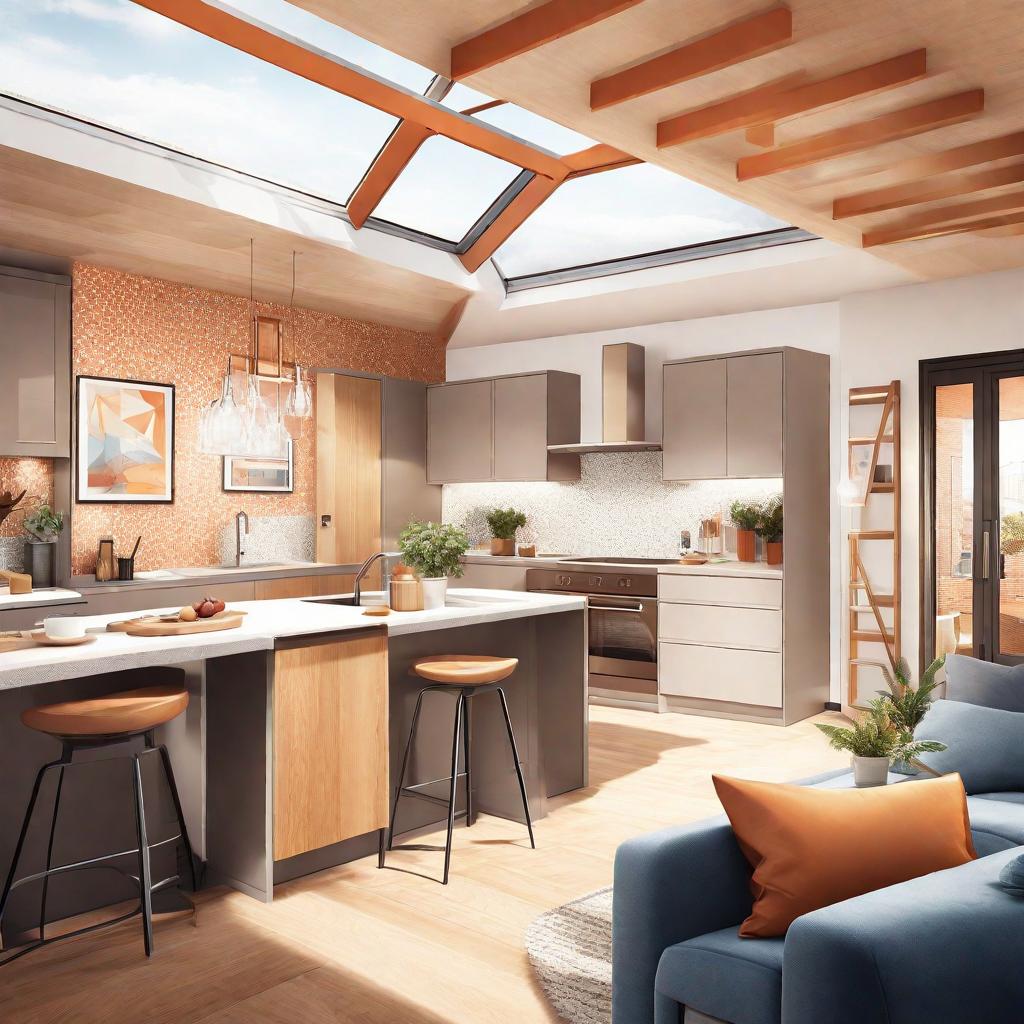
Understanding Property Photos: A Perspective on Highlights and Pitfalls
The Importance of Property Photos in Real Estate

1. Discussing the Role of Photos in Property Advertisement
In the world of real estate, property photos play a crucial role in capturing the attention of potential buyers and market a property effectively. They serve as the first impression and can be the deciding factor on whether a buyer will even consider visiting the property in person. Photos have the power to create an emotional connection, enticing buyers to explore further and envision themselves living in the space. It’s no wonder that real estate agents invest in professional photography to showcase a property’s best features.
2. How Quality Photos can Influence a Buyer’s Decision
Quality photos can make all the difference when it comes to a buyer’s decision-making process. High-resolution images that are visually appealing and showcase the property in its best light can elevate interest and generate excitement. When buyers see well-composed photos that showcase unique architectural details, spacious rooms, and inviting outdoor areas, they are more likely to develop a personal connection with the property. Quality photos communicate professionalism and attention to detail, giving buyers a sense of trust and confidence in the listing.
3. The Impact on Sales due to Misleading Property Photos
On the flip side, misleading property photos can have a detrimental impact on sales. While it may be tempting for sellers or agents to enhance or manipulate photos to make a property look more appealing, it can result in disappointment and distrust from potential buyers. When the actual property fails to live up to the expectations set by the photos, buyers may feel misled and lose interest in pursuing the property further. It is essential for sellers and agents to maintain honesty and transparency in their property photos to avoid any negative repercussions.
Identifying High-Quality and Accurate Property Photos

1. Detecting High-Resolution Images: A Mark of Quality
One of the first indicators of high-quality property photos is the resolution. High-resolution images showcase clear and detailed shots, enabling buyers to zoom in and examine the property’s features closely. Blurry or pixelated images indicate a lack of professionalism and attention to detail. When assessing property photos, look for sharpness and clarity to ensure an accurate representation of the property.
2. Looking for Consistency in Property Photos
Consistency is key in determining the credibility of property photos. If a listing displays photos taken at different times or with varying styles, it raises questions about the accuracy and authenticity of the images. Look for a cohesive visual narrative that flows seamlessly, allowing buyers to visualize the property as a whole. Consistency in lighting, angles, and composition indicates a genuine representation of the property.
3. Verifying the Authenticity of Images: Avoiding Photoshops and Filters
In today’s digital age, it is important to be cautious of manipulated property photos. Sellers and agents may be tempted to enhance or alter images using Photoshop or filters to make a property look more appealing. However, this can be misleading and result in disappointment for potential buyers. Verify the authenticity of images by comparing them to the property in person or requesting unedited photos. Transparency and honesty are crucial in ensuring that photos accurately reflect the property’s true characteristics.
Decoding the Hidden Details in Property Photos

1. Reading into what the Camera is Showcasing
When analysing property photos, it is essential to pay attention to what the camera is highlighting. Is it emphasizing the spaciousness of the rooms, the natural lighting, or the architectural details? Understanding the photographer’s intention can provide insights into the property’s unique features and selling points. By reading between the lines, buyers can get a better understanding of what makes the property stand out.
2. Looking Beyond the Beautiful Photos: Identifying Potential Issues
While stunning property photos can capture attention, it is equally important to look beyond the surface and identify any potential issues or flaws. Keep an eye out for signs of wear and tear, hidden damage, or any areas that might require repairs. Sometimes, a well-staged photograph can mask underlying problems, so it’s crucial to approach property photos with a discerning eye and investigate further to ensure the property meets your expectations.
3. Understanding the Use of Wide-Angle Lenses and its Effects on Perception
Wide-angle lenses are commonly used in real estate photography to capture large spaces and create a sense of depth. However, it’s important to be aware of their potential to distort the perception of size and proportions. Take note of any extreme wide-angle shots that make rooms appear larger than they actually are. While these photos can be visually appealing, they may give a false sense of scale, leading to disappointment when viewing the property in person.
Spotting Red Flags in Property Photos

1. Identifying Common Misrepresentation Techniques in Property Photos
There are certain misrepresentation techniques that sellers and agents may employ to make a property appear more desirable. Keep an eye out for overly saturated colours, excessive brightness, or overly edited images that give an unrealistic representation of the property. Be cautious of photos that only show partial views of certain areas, as they may be deliberately avoiding showing any potential flaws. Trust your instincts and always request additional photos or information if something seems off.
2. Seeing through Strategic Photo Omissions: What’s not Shown?
Sometimes, what is not shown in property photos can be just as telling as what is shown. Pay attention to areas that are conspicuously absent from the photo collection. Are there any images of the backyard, the bathrooms, or specific rooms? Strategic omissions may indicate that there is something the seller or agent does not want you to see. Always inquire about missing areas and take the time to visit the property in person to ensure you have a complete understanding.
3. The Pitfalls of Professional Staging: Too Good to be True?
Professional staging can transform a property, making it look magazine-worthy and irresistible. While it can enhance the appeal of a home, it is essential to remember that staged photos may not accurately represent the property’s true state. Staging can create a picture-perfect environment that may be difficult to replicate in reality. Keep in mind that the furniture, decor, and layout shown in the photos may not be included, and the property may appear different when vacant. Consider staging as a bonus but focus on the property’s fundamental features and its potential to meet your needs.
Navigating Virtual Tours and Aerial Photography

1. Understanding the Pros and Cons of Virtual Tours
Virtual tours offer an immersive experience that allows buyers to explore a property remotely. They provide a comprehensive view of the space, allowing you to virtually walk through rooms and get a sense of the flow and layout. Virtual tours can save time and offer convenience, particularly for long-distance buyers. However, it’s important to remember that they cannot fully replace an in-person visit. Virtual tours may lack the tactile experience and the ability to assess the property’s condition thoroughly. Use virtual tours as a supplement and still prioritize a physical visit whenever possible.
2. Interpreting and Evaluating Aerial Photography
Aerial photography offers a unique perspective, showcasing a property’s surrounding environment and its proximity to amenities or attractions. It can provide valuable insights into the neighbourhood and the property’s overall setting. When evaluating aerial photography, consider factors such as nearby roads, green spaces, or potential noise sources. However, be mindful that aerial photography might not capture the true experience of the property from ground level. It’s important to balance the appeal of aerial views with a comprehensive examination of the property’s interior and exterior features.
3. Ensuring Virtual and Aerial Imaging is not a Distraction from Actual Property Details
While virtual tours and aerial photography can be impressive, it’s crucial not to let them overshadow the importance of evaluating the actual property details. Remember to prioritize the photos that truly showcase the interior and exterior features of the property. Don’t let the allure of virtual or aerial images distract you from conducting a thorough examination of the property’s condition, layout, and functionality. Use these additional imaging tools as references, but always focus on the realities of the property itself.
Summary and Final Thoughts

In conclusion, property photos are an essential component when it comes to the real estate market. High-quality and accurate photos have the power to captivate buyers and facilitate the decision-making process. By understanding how to identify quality images, decoding hidden details, and recognizing red flags, buyers can make informed decisions about the properties they are interested in. It is essential to strike a balance between the visual appeal of property photos and the need for authenticity and transparency.
Frequently Asked Questions (FAQs)
1. How important are photos in real estate listings?
Photos are incredibly important in real estate listings as they serve as the first impression for potential buyers. They have the power to capture attention, create an emotional connection, and entice buyers to explore further. High-quality photos can significantly influence a buyer’s decision-making process.
2. How can I spot deceptive techniques in property photos?
To spot deceptive techniques in property photos, be cautious of heavily edited, overly bright, or unrealistic images. Pay attention to strategic photo omissions and areas that are absent from the photo collection. Trust your instincts and always request additional photos or information if something seems off.
3. What should I look out for in virtual tours and aerial photographs?
In virtual tours, use them as a supplement and focus on visiting the property in person whenever possible. Evaluate the property’s condition and functionality beyond the virtual experience. When interpreting aerial photographs, consider factors such as nearby roads, green spaces, and noise sources, but balance the appeal of aerial views with a comprehensive examination of the property’s interior and exterior features.
To see some examples of great property photos, check out our available properties for sale and for rent!